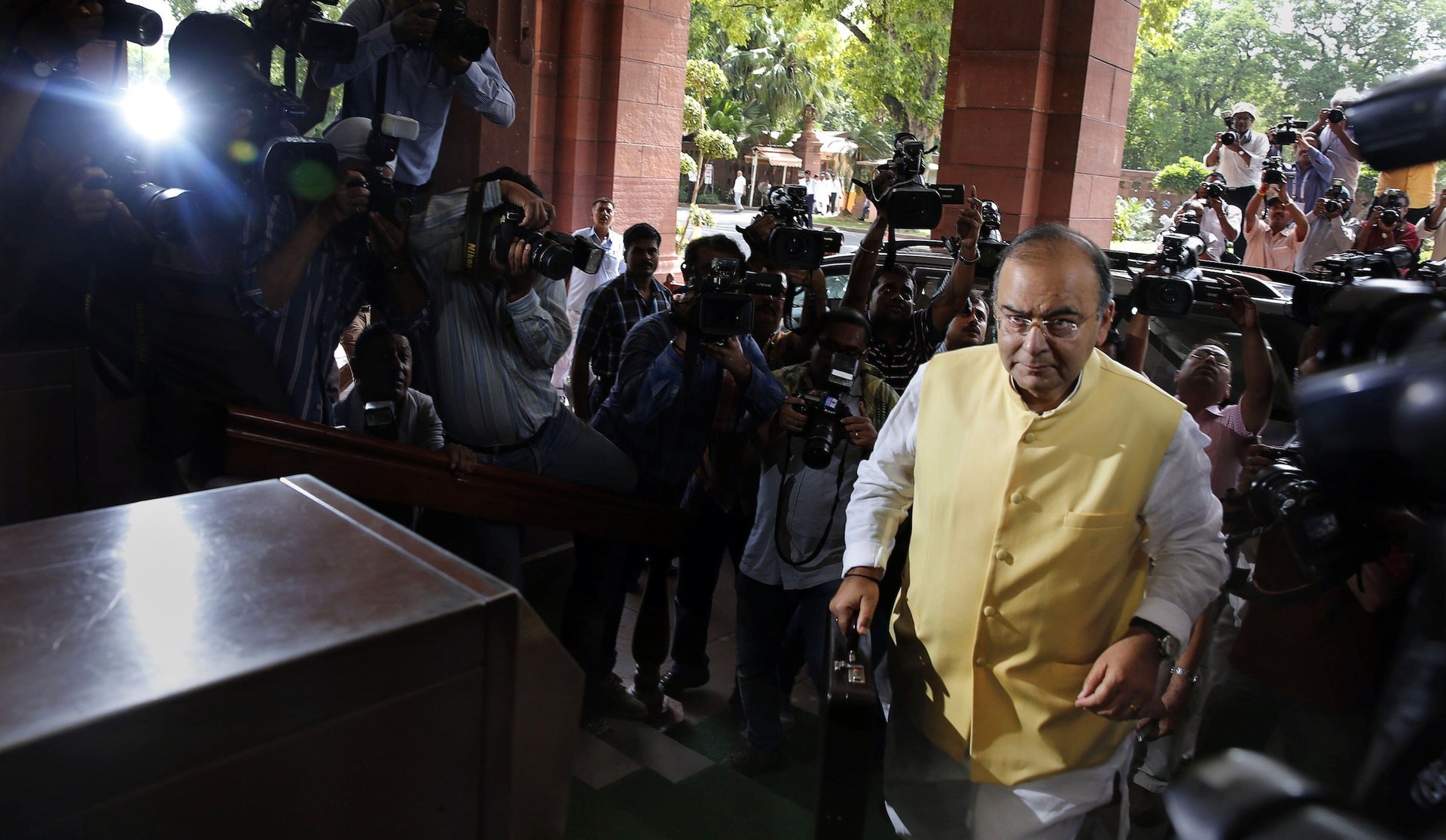The budget mostly tinkered, offered little by way of substantive change
“Minimum government, maximum governance” was a nice election slogan. What did it translate into, in practice in the new government’s first Budget? Actually, not much in the way of substantive change.


“Minimum government, maximum governance” was a nice election slogan. What did it translate into, in practice in the new government’s first Budget? Actually, not much in the way of substantive change.
This isn’t the bold policy statement that economy-watchers were hoping for. On the other hand, it hasn’t made too many apparent missteps. It a highly technical document with the usual excise and customs tweaks. There are lots of token commitments of Rs100 crore ($16 million) here and there. The usual tinkering with complex excise and customs rates belies the minimum government rhetoric. While there are promises about action on the much awaited taxation reforms—Goods and Services Tax (GST) and Direct Tax Code—there is nothing concrete on either front.
Direct tax rates remain unchanged for individuals and for corporations. There’s some relief for the individual tax-payer. The minimum income tax threshold has been hiked. Anybody who has taken out a mortgage to buy the house they live in, also gets a bigger tax break. There’s some attempt to encourage greater household savings with the “free” investment limit under Sec 80C raised by Rs50,000.
The red tape for financial investors should reduce substantially as KYC (know your customer) norms are simplified and made single-window along with single-window demat accounts. There are promises to improve financial inclusion by helping every household acquire at least two bank accounts, and also to improve insurance penetration. Presumably this should be of major benefit to lower-income groups, hovering just above the poverty line.
There could be new opportunities for risk-taking investors since the government is committed to a substantial disinvestment programme across PSUs, with a special focus on government-owned banks, which must raise Rs.2.4 lakh crore by 2018. A buoyant stock market makes this look credible at the moment.
The impact of all this taken together could be substantially positive for individuals at the upper end of new tax exemption limits. On the negative side, any investor who is heavily exposed to debt mutual funds must reckon with big negative changes in the long-term capital gains (LTCG) regime. The holding period for LTCG rises to three years (from one year) and the LTCG rate also rises to 20%, from 10%.
There has been some attempt to encourage overseas investments across sectors with the easing of FDI limits in both insurance and defence. There are guarded assurances that the government will avoid tax laws which have retrospective effects. There are also changes proposed in the transfer pricing mechanism, which could positively affect MNCs.
The government will put a fair amount of money into key infrastructure areas with large investments earmarked for roads, airports and ports. It will also try to encourage private investments into these areas and into sectors such as rural housing. But a number of infrastructure projects with private participation are already stalled. Getting them restarted will require substantial improvements in administrative efficiency, rather than mere regulatory changes. This is where the maximum governance will be required.
The Budget should not, in itself, be inflationary. But it does maintain the entitlement structure set up by the UPA. Food subsidies will rise. There are massive allocations for farm and rural credit. The fiscal deficit is to be targeted at 4.1%. The growth and tax revenue estimates seem reasonably realistic. The stock market has seen a relief rally after an initially bearish response. If the government sticks to its commitment not to over-spend, that in itself, may encourage a turnaround.